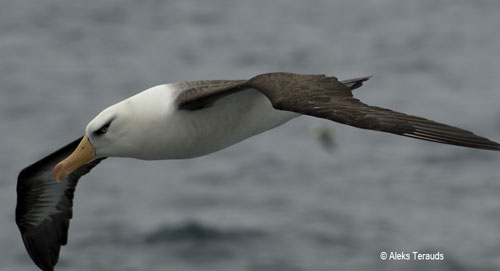Peter Dillingham (George Perkins Marsh Institute, Clark University, USA) and David Fletcher (Department of Mathematics & Statistics, University of Otago, New Zealand) write on-line in the journal Biological Conservation on what level of anthropogenic mortality of threatened albatrosses and petrels should not be exceeded.
The paper's abstract follows:
"Seabirds such as albatrosses and petrels are frequently caught in longline and trawl fisheries, but limited demographic data for many species creates management challenges. A method for estimating the potential biological removal (the PBR method) for birds requires knowledge of adult survival, age at first breeding, a conservation goal, and the lower limit of a 60% confidence interval for the population size. For seabirds, usually only the number of breeding pairs is known, rather than the actual population size. This requires estimating the population size from the number of breeding pairs when important demographic variables, such as breeding success, juvenile survival, and the proportion of the adult population that engages in breeding, are unknown. In order to do this, a simple population model was built where some demographic parameters were known while others were constrained by considering plausible asymptotic estimates of the growth rate. While the median posterior population estimates are sensitive to the assumed population growth rate, the 20th percentile estimates are not. This allows the calculation of a modified PBR value that is based on the number of breeding pairs instead of the population size. For threatened albatross species, this suggests that human-caused mortalities should not exceed 1.5% of the number of breeding pairs, while for threatened petrel species, mortalities should be kept below 1.2% of the number of breeding pairs. The method is applied to 22 species and sub-species of albatrosses and petrels in New Zealand that are of management concern, of which at least 10 have suffered mortalities near or above these levels."
Reference:
Dillingham, P.W. & Fletcher, D. 2011. Potential biological removal of albatrosses and petrels with minimal demographic information. Biological Conservation doi:10.1016/j.biocon.2011.04.014.

John Cooper, ACAP Information Officer, 27 May 2011

 English
English  Français
Français  Español
Español